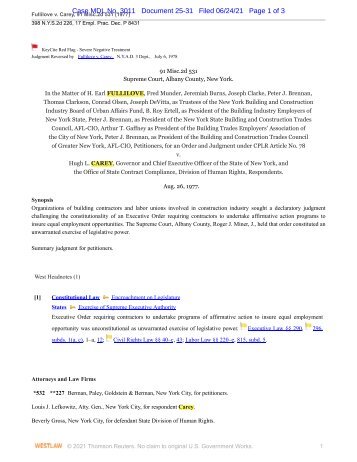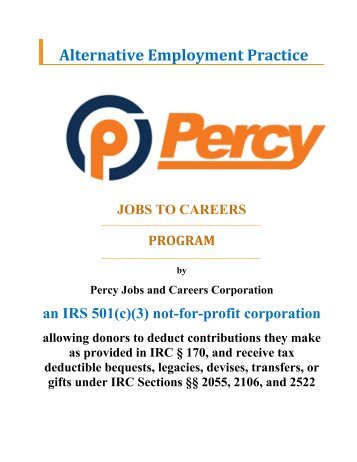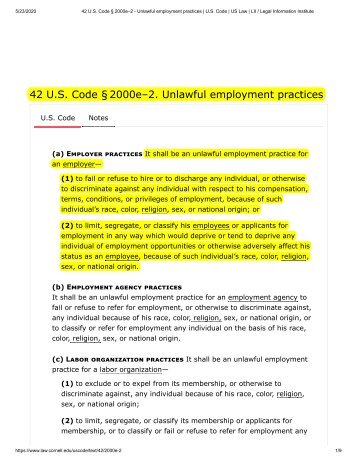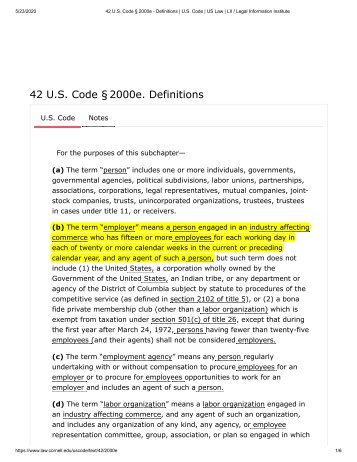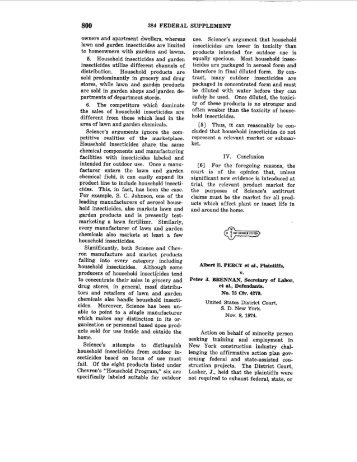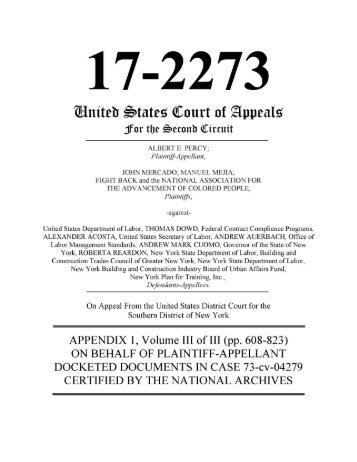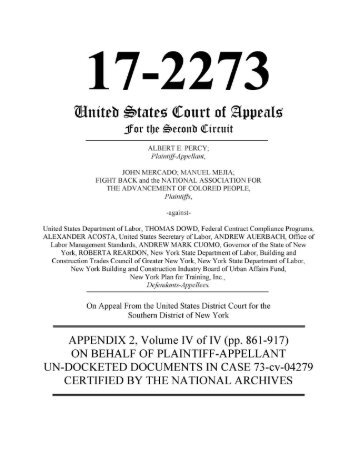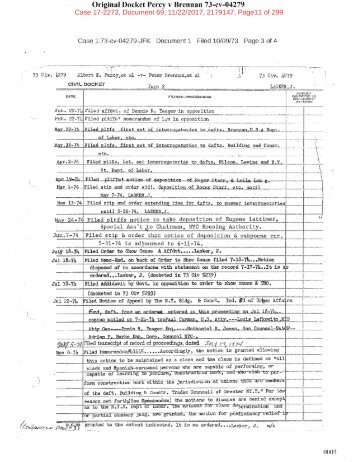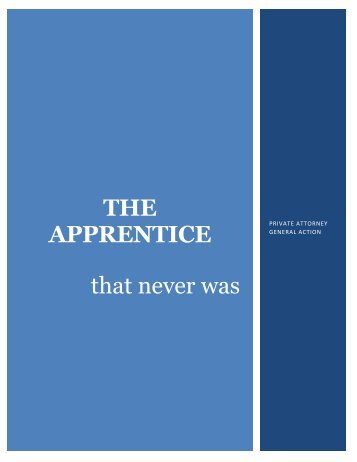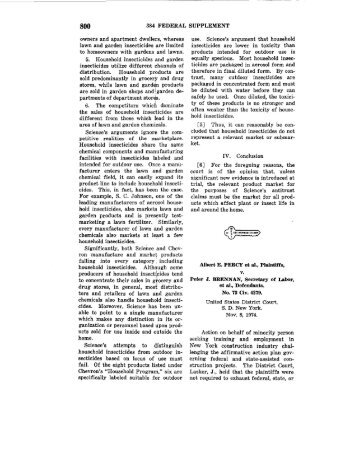The Percy Program
It is a fight to level the playing field to be able to compete for jobs and careers on the basis of skills and make available apprentice training to all. In 1973 Al Percy launched a class action lawsuit to give workers like him a chance to better their lot in life. It would also ensure the availability of skilled workers to build the infrastructure of the future.
Percy Action
envisioned by President
envisioned by President Lyndon Johnson upon the signing of the Civil Rights Act of 1964 and the adoption of Presidential EO 11246. 132. In the Percy Action, Percy sought to be admitted into the apprenticeship program for himself together with the thousands of persons identified by Judge Lasker in 1974 as the Class. 133. The training that the Class was and is seeking is apprenticeship involving paid on-the-job training coupled with related classroom instruction. 134. “I am still trapped in my own black skin”, Percy said and asked why in all these years, apprenticeship envisioned by Abraham Lincoln did not come to pass. Percy was forgotten, Percy said: "all I was looking for is to gain the skills to be able to compete for jobs, not be given jobs for which I was not qualified.” Percy and his class are the apprentices that never happened, apprenticeship that Lincoln envision on April 11, 1865. What happened? 135. Percy asked why did he never become The Apprentice? "I waited, faithfully, expecting that the relief awarded by the United States District Court would happen, any day I would be apprenticed, but days turned into weeks turned into months and then years, while I waited.” Now, at the close of Percy's days, he seeks the relief for the class, yes, a new generation, but with the same entitlement to apprenticeship, the award is now enforced here. “Even though my skin is black, I would rather be free to compete for jobs based on my skills rather than the special treatment because of color of my skin or ethnicity.” 136. The low-income circumstances in the geographic area surrounding the facilities and projects as enumerated as the tag-along cases, places the Percy Class members at such a low level because they have been constricted to the low income neighborhood in which their families live. The economic circumstances compel children to leave school at an early age in order to help sustain themselves and the family, where fathers who are unable to provide for their families have left in order to maximize public assistance to family members, forcing uneducated children into illegal jobs such as selling drugs just to survive, who only coincidently happen to be black. These low income economic circumstances tie them to the Percy Class members and other families in the neighborhood, denying them the opportunities they 34
seek for which this action has been brought. These dire economic circumstances can persist for generations, damaging the very fabric of the Class, their families and their neighborhoods. 137. Equal opportunity at its core carries the simple mandate that opportunities should be open to all on the basis of competence alone. The complaint is that the Percy Class has not been afforded the minimum training and preparation needed to be eligible for the jobs that become available, and those who do secure work as a result of hiring goals are often unable to keep their jobs due to lack of skills. 138. The facts set forth herein are typical of the members of the Class Percy embodies, the hardscrabble Class members who are deprived of the opportunity to become fully employed as a skilled craftsperson simply desiring the dignity of work. 139. The Percy Class are the people outside of the headlines, the invisible people that only get noticed when the lights go out, when the water ceases to flow, when the trains stop, when the sewers back up or when the roads and bridges crumble. They are the workforce that ensure society does not come to a halt. And as much as society relies on them, their challenges in securing the skills necessary have gone ignored. 140. This skills deficit is most notable in communities in which chronic unemployment is most prevalent. These are also the communities most likely to embrace and benefit from the types of jobs that keep society functioning. The skills they lack are the impediment to moving them from chronic unemployment to gainful employment, and also crossing the skills deficit divide. 141. Since the discontinuance of Percy v. Brennan Case 73-cv-04279, there has been virtually no meaningful correction of skill deficits envisioned by President Lyndon Johnson upon the adoption of Presidential EO 11246, which continues to date as boilerplate in all public contracts. 142. Despite Federal Funding poured into Owners for decades, large clusters of the members of the Percy Class are unemployed, unskilled, poor and disenfranchised in communities surrounded by the very public works projects for whom the Federal Funding was intended to assist. The same 35
- Page 1 and 2: THE APPRENTICE PRIVATE ATTORNEY GEN
- Page 3 and 4: The dilemma Lincoln was facing was
- Page 5 and 6: in the compromise of 1877 which end
- Page 7 and 8: often unable to keep their jobs and
- Page 9 and 10: Available Less Discriminatory Alter
- Page 11 and 12: UNITED STATES DISTRICT COURT for th
- Page 13 and 14: accepting Defendant New York State
- Page 15 and 16: ceased and the US withdrew from Sou
- Page 17 and 18: compliance with the New York State
- Page 19 and 20: A, Pt. 29 and Pt. 30. (the Fitzgera
- Page 21 and 22: y Secretary of Labor Herman in Apri
- Page 23 and 24: 51. There are a wide variety of spe
- Page 25 and 26: 60. There are many paths of advance
- Page 27 and 28: 72. We (myself as Class Counsel, th
- Page 29 and 30: The New York State Department of La
- Page 31 and 32: 04279, Appendix 1, Volume 1, page 5
- Page 33 and 34: known as the National Apprenticeshi
- Page 35 and 36: 100. The Percy Program (XVI. THE PE
- Page 37 and 38: which was done at Docket #96-104 in
- Page 39 and 40: economic and social injury and dama
- Page 41 and 42: Department as a mechanic at the Cen
- Page 43: 125. Percy was not promoted, remain
- Page 47 and 48: education, skills development, trai
- Page 49 and 50: XI. The Advocates ALTERNATIVE EMPLO
- Page 51 and 52: 158. The Percy Program first presen
- Page 53 and 54: REGULATORY APPROVALS OF PERCY PROGR
- Page 55 and 56: on behalf of the Percy Class applie
- Page 57 and 58: The Percy Program Presented to the
- Page 59 and 60: States of America, and of rights se
- Page 61 and 62: 196. The apprenticeship program por
- Page 63 and 64: wages and lost opportunity along wi
- Page 65 and 66: 214. In Case 73-cv-04279, Percy sou
- Page 67 and 68: Percy Class when the State proffere
- Page 69 and 70: willing and able to work, , and dam
- Page 71 and 72: apprenticeship programs. The Percy
- Page 73 and 74: clean their work surfaces. Working
- Page 75 and 76: negative pressure, positive pressur
- Page 77 and 78: temperature & humidity of the work
- Page 79 and 80: systems), the ordering process (e.g
- Page 81 and 82: decontamination work area, mechanic
- Page 83 and 84: employee information and training,
- Page 85 and 86: mitigate the hazards are emphasized
- Page 87 and 88: Lead Worker EPA 270. Lead hazard co
- Page 89 and 90: compensation carrier that is also a
- Page 91 and 92: The maximum amount that a multiple-
- Page 93 and 94: Annual Standard Premium which is as
- Page 95 and 96:
of audited standard premium. Amendm
- Page 97 and 98:
State’s offer of EO 45, but EO 45
- Page 99 and 100:
XXVI. AS AND FOR A FIFTH CAUSE OF A
- Page 101 and 102:
the availability of the singular cr
- Page 103:
disenfranchised, and, pray that thi
Inappropriate
Loading...
Mail this publication
Loading...
Embed
Loading...
